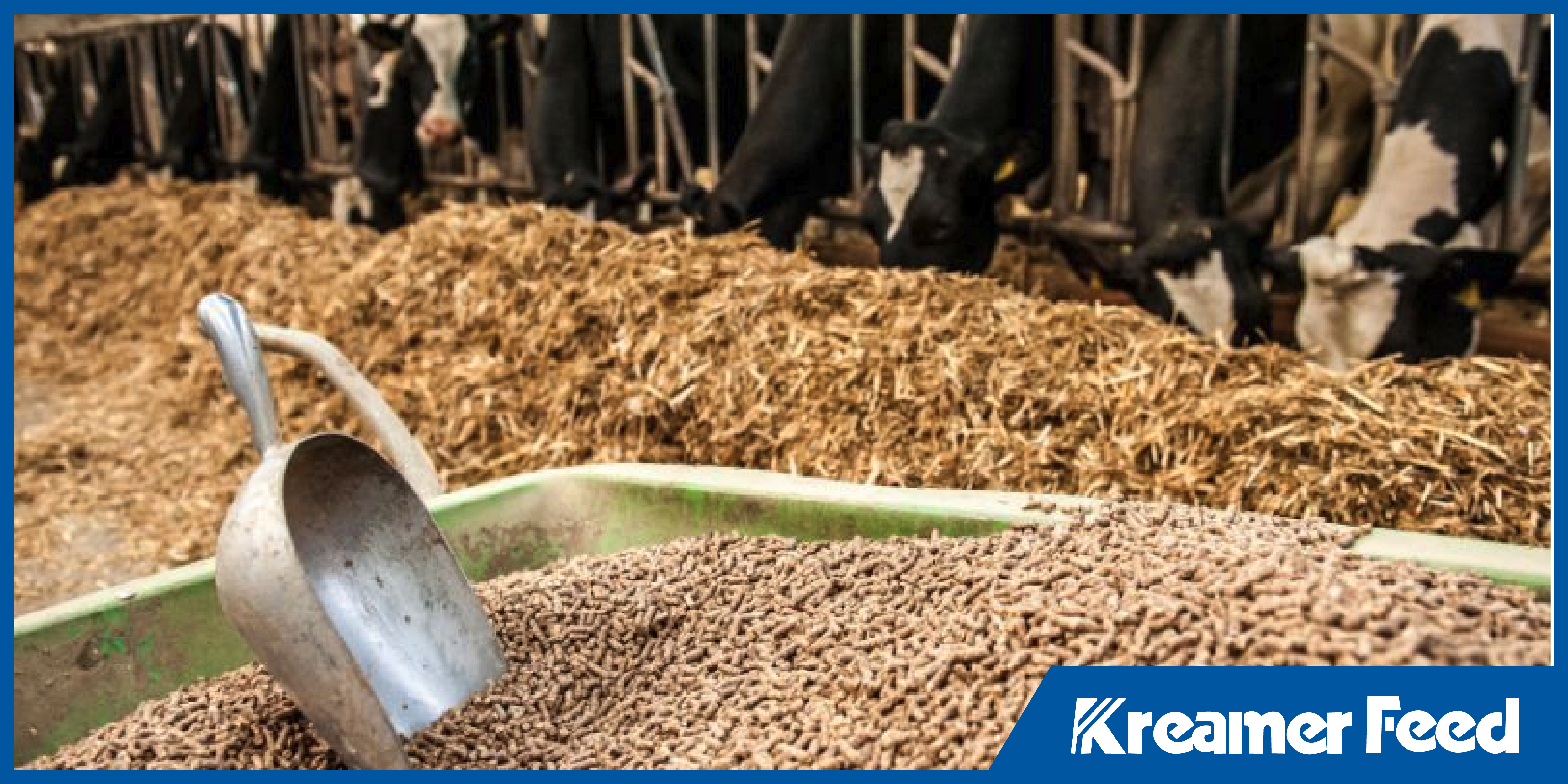
As a farmer or rancher, you may be wondering, can you mix feed types? Whether you’re raising poultry, cattle, or other livestock, mixing animal feeds can seem like a simple solution to meet your animals’ dietary needs. However, the process is not always straightforward, and improper feed mixing can lead to nutritional imbalances or health issues for your livestock.
At Kreamer Feed, a family-owned business with nearly 80 years of expertise, we’re committed to helping you make the best decisions for your animals’ health. In this blog, we’ll walk you through a feed mixing guide and share the dos and don’ts of livestock feed mixing to ensure that your animals stay healthy and happy.
The Importance of Proper Feed Mixing
The idea of mixing animal feeds might sound like a good way to balance nutrients or make feeding more efficient, but it’s essential to understand the potential risks involved. Mixing feeds, especially when combining organic and conventional options or different feed types, can result in unintended nutritional imbalances. Livestock rely on a precise balance of nutrients to grow, produce, and stay healthy. Without this balance, animals can experience poor growth, digestive issues, or even long-term health problems.
At Kreamer Feed, we take pride in producing high-quality organic feeds that support the health of your livestock. Whether you’re mixing our organic feeds into your daily feed regimen or simply exploring different options, it’s crucial to make informed decisions to avoid over or under-supplying essential nutrients.
Dos and Don’ts of Livestock Feed Mixing
Here’s a breakdown of the essential dos and don’ts of livestock feed mixing to guide you in providing the best nutrition for your animals.
Do Follow a Nutritionally Balanced Approach
When it comes to mixing animal feeds, balance is key. Whether you are blending grains, proteins, or adding supplements to your animals’ diet, be sure to follow a feed mixing guide that is tailored to the specific nutritional needs of your livestock.
Dos:
- Always check with a nutritionist or a reputable feed manufacturer like Kreamer Feed before mixing different feed types. We can provide valuable guidance to help ensure that your mix meets the nutritional needs of your livestock.
- Pay attention to the specific requirements of your animals. Different life stages (e.g., growing, lactating, or pregnant) may have different dietary needs. Adjust your feed mix accordingly to support their growth and health.
- Use precise measurements when combining feeds. Accurate mixing is essential to maintain the right balance of nutrients.
Don’ts:
- Don’t randomly mix different types of feed without considering the nutrient profile. Some feeds may contain higher levels of protein, fat, or other nutrients that could lead to excess or deficiency when mixed together.
- Don’t mix feed without understanding the potential interactions between the different ingredients. Certain feed ingredients may cancel each other out or become less effective when combined.
Do Stick to High-Quality Feeds
Quality matters when it comes to mixing animal feeds. At Kreamer Feed, we’ve built our legacy on providing high-quality organic feed that promotes better health, productivity, and sustainability. Using premium feeds ensures that the nutrients are more bioavailable to your livestock and helps maintain the integrity of the feed mix.
Dos:
- Always use feeds that are fresh and stored correctly. Quality deteriorates over time, and old or improperly stored feed can lead to health issues when mixed with fresher ingredients.
- If mixing organic and conventional feeds, ensure that the organic feed is properly labeled and certified to avoid contamination. Organic feeds mixing tips can guide you on how to maintain the purity of organic feed when combining with other types.
Don’ts:
- Don’t mix low-quality or processed feeds with high-quality ingredients. This can lead to a mix that doesn’t provide the optimal nutrition that your animals need.
- Don’t use feed that is expired or damaged. Expired feed may not only lose its nutritional value but could also cause health problems for your animals.
Do Consider the Digestibility and Formulation
Different feeds are formulated for different types of livestock, and understanding the digestibility of each feed type is essential for proper feed mixing. Not all feeds are compatible, especially when mixed with ingredients that are harder for animals to digest.
Dos:
- Choose feeds that are easy to digest for your specific type of livestock. For example, poultry feed and cattle feed have vastly different nutritional needs and digestive capabilities. Use specialized formulations for each species.
- If you’re mixing for a specific purpose, such as weight gain or milk production, use ingredients that are known to support those specific goals.
Don’ts:
- Don’t mix feeds with vastly different textures or compositions that could affect digestibility. For instance, poultry feed is often finer and contains higher protein levels, while cattle feed may be bulkier with more fiber content. Mixing feeds with differing textures may affect how well the animals can digest the feed.
- Don’t forget to monitor your animals’ response to the feed mix. If you notice signs of digestive upset or poor performance, adjust the feed mix accordingly.
Final Thoughts: Mixing Feed the Right Way
When it comes to mixing animal feeds, it’s important to remember that the right balance of nutrients is essential for healthy, thriving livestock.
By following our feed mixing guide, respecting the dos and don’ts of livestock feed, and using our organic feed advice, you can ensure that your animals receive the highest-quality nutrition possible. When you choose Kreamer Feed, you’re not just getting top-notch feed—you’re partnering with a team that understands the unique needs of your farm and is committed to your success.
Mixing feeds doesn’t have to be complicated, but it requires careful consideration and attention to detail. Trust the experts at Kreamer Feed to help you make the right choices for your farm and your livestock.